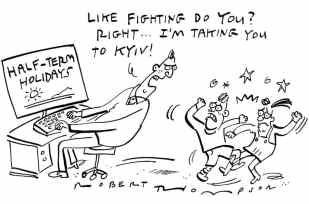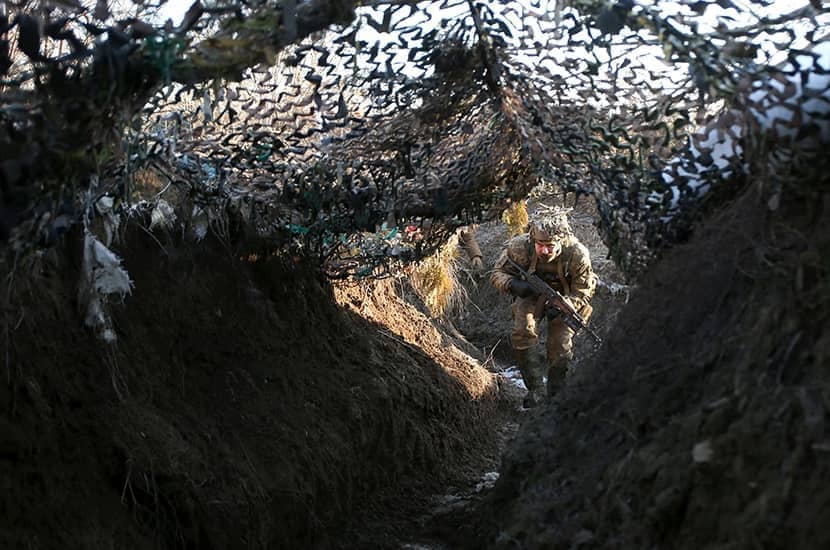A bluff only works if you can carry it off convincingly. The massing of some 130,000 Russian soldiers on Ukraine’s borders has led to London and Washington declaring that a full-scale invasion is imminent, but it could still be a feint. The Russians know everything they do can be seen by satellite.
On the phone from Kiev, Colonel General Ihor Smeshko says he is not inclined to read too much into the Russian army’s logistics. He was head of Ukraine’s domestic intelligence service and later a candidate for president. ‘From the military point of view, Russian Federation has prepared everything needed to start the war,’ he said, but he still did not want to believe that the ‘tsar’ in the Kremlin had committed to the ‘full craziness’ of an invasion. ‘It would be the beginning of the end of Russian Federation.’

It may seem odd to talk about Russia collapsing when it’s the Ukrainians digging trenches, but Vladimir Putin’s regime faces two dangers. The first is economic sanctions. The second is casualties and the reaction if coffins start to arrive back from Ukraine. The Ukrainians are prepared to fight and have anti-tank weapons from the US and Britain. Russian convoys would be vulnerable to ambush. This might not be like the quick and relatively bloodless Russian annexation of Crimea in 2014.
One estimate is that Putin would need half a million troops if he were serious about invading Ukraine. So he might try something smaller and ambiguous. I have seen the Russian way of war on two occasions — in Eastern Ukraine in 2014 and Chechnya in 1999 — and both involved a measure of deception. The real fighting is also often done by mercenaries, who were once known as contractniki, or contract soldiers.
Today, there is the Wagner Group, the private army the Kremlin has used in Syria. Now, as then, war is business. Wagner is run by an oligarch known as ‘Putin’s chef’ because he rose from running a hotdog stand in St Petersburg to owning one of Putin’s favourite restaurants. A Reuters report this week says a former Russian intelligence officer with connections to Wagner has gone to Donetsk, presumably to start organising things. This has raised fears of a false flag operation, a fake attack to be blamed on the Ukrainians. Perhaps President Putin thinks Wagner can start the war — and he can finish it.
‘Putin is at the peak of his happiness. Everything depends on him. He’s the king of the world’
If so, it would be an appallingly risky gamble. I spoke to Alex Kovzhun, a Ukrainian political consultant and former adviser to Boris Yeltsin. To him, Putin represents ‘a dark, dark side of Russian psyche’. For purely psychological reasons, he thought, Putin would prolong the crisis for as long as possible. ‘He’s at the peak of his happiness. It’s like he’s in a pre-orgasmic state. Everything depends on him and everybody’s trying to guess what he will decide after morning coffee. He’s the king of the world.’
The troop movements on Ukraine’s border are a spectacle designed for two audiences: the international community and the one that matters, Russia. But one misstep by the Kremlin’s master manipulator and a real war could start, the biggest in Europe for 70 years. General Smeshko in Kiev says he fears that Russia would try to repeat Nato’s success in bombing Serbia during the 1999 Kosovo campaign. ‘But do you know how many nuclear power plants there are in Ukraine?’ The US could not stay out of such a war, he thinks. ‘World War 3 could start in Ukraine. The danger is tremendous. Everything is possible.’






Comments